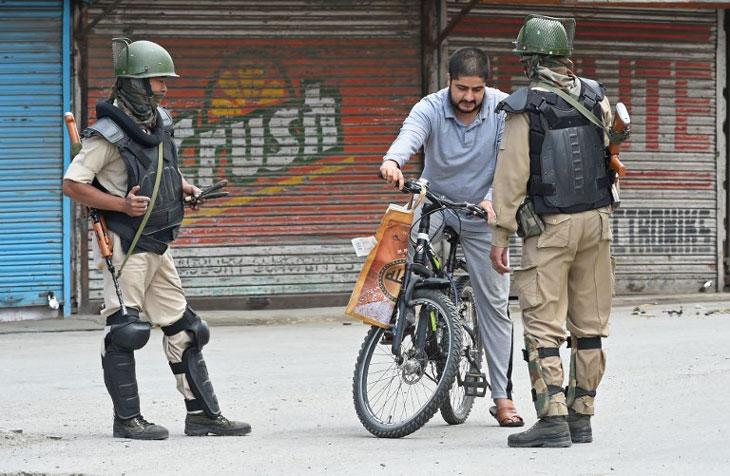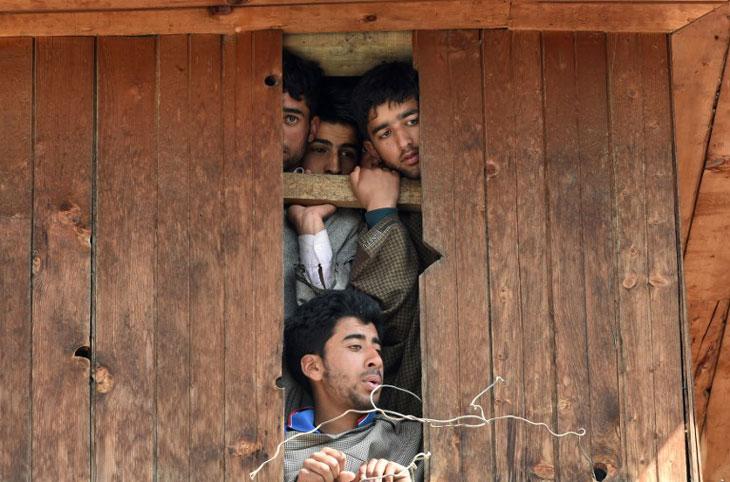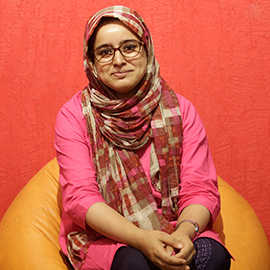Azadi and kheh: A French filmmaker documents the human face of the Kashmir struggle
_89872_730x419-m.jpg)
“Agar firdous baroye zameen ast, hami asto, hami asto, hami ast (If there is paradise on earth, it's here, it's here, it's is here)” - Abu-l Hasan Yamīn al-Dīn Khusrow
Even today, despite decades of turmoil in the Kashmir valley, Khusro's couplet still applies to the picturesque state. While blood still flows as Kashmiri's continue their fight for autonomy and identity, the land has remained the home of giant snow-clad mountains, verdant trees, stunning lakes, and a perfect setting for romance to blossom.
It is this beauty that called out to Stanislas Giroux, a French medical student, often travels to conflict zones to document their reality through his short movies. During his visit to Palestine last year, Giroux first became aware of the Kashmir issue. Fast-forward a year, Giroux has completed a stint in the Valley, with a short movie, Kashmir-A Lost Paradise, to show for his travels.
The film, which attempts to shed light on the Kashmir issue through the eyes of a common Kashmiri, has garnered appreciation worldwide. In a conversation with Catch, Giroux talks about how his journey to Kashmir came about, his experience in the Valley, and his take on the ongoing crisis. These are the edited excerpts:
Sehar Qazi (SQ): What piqued your interest in Kashmir, and how did your trip come about?
Stanislas Giroux (SG): I started to gain an interest in the problems of borders and grey-zones during my visit to Palestine last year: Naturally, I came across the Kashmiri issue. I started to study the groundings of this conflict and was surprised that a struggle that started such a long time ago didn't get more attention.
I am sensitive about human rights issues, and I am fascinated by the negative impact of humans in antique and magnificent places, especially in this zone that poets used to describe as heaven on Earth.
SQ: Were you looking to tell this many stories from Kashmir? Or was there another plan?
SG: Yes, and it was the first time I planned to do so. After talking to a lot of people online while preparing my trip, months before taking off, I realised that I might have been a little bit too optimistic about telling these stories in three minutes.
On the field, when I discovered that every single human being of Kashmir had a story about some beautiful or terrible experience, I decided to craft little stories about snapshots of the video. I wrote them as a "behind the scenes" bonus, where everyone can virtually play the pause button on the video, and read what a portrait is all about.

SQ: How do you balance aesthetics and truth? Do you face a moral dilemma while covering suffering?
SG: It's always easier to bring a message in an aesthetic way. The search for beauty catches a new audience that might not have been interested in a specific political issue, or a misunderstood culture. It's my way to share my message, but it's also quite natural to capture beautiful images when you're actually in heaven on earth.
And sure, it was a dilemma to film both the beauty and the suffering, but it was part of the message. It's also a visual essay to capture the most accurate feelings of daily life in Kashmir. Those two feelings are here, and that's what it makes that place beautiful. The J&K tourism video campaigns are not accurate at all about Kashmir and its beauty and humanity.
SQ: Watching your videos, the montage shots are simple and the transitions are fast. Why did you settle on this style?
SG: I was always bored by people posting a hundred pictures of their last travel experience online, or, worse, showing them one by one in real life. That's why I decided to share my vision of a culture in three or four minutes, before people get bored or feel trapped.
When I started this kind of film-making a few years ago, the success was quite unintentional, and it was the starting point of an endless will to share my point of view about foreign cultures and to tell stories.
The more the result is short, the more it's challenging, because you need to make the audience experience so many feelings in such a short time. I try to make my cuts fast, but I need to think a lot so as to craft them in a way that the whole piece doesn't look like a big mess of random shots. Storytelling is the key for my film-making.
SQ: What's your personal take on the ongoing unrest in Kashmir. Do you have a particular opinion?
SG: My idea of a utopian world would be a complete erasing of all borders between states, but it's not conceivable. About the Kashmir issue, my very personal point of view is the following: When two dogs are fighting for a piece of meat and don't want to lose the bite, my idea would be to pull both of them apart. For me, Kashmir should gain access to a full autonomy and access to peaceful stability.
After all, when you travel to Kashmir, you feel like you're in another country, with its own rules, language, culture, and faces. Isn't it enough for claiming independence, like in Catalunya?
SQ: Given the situation Kashmir is in, what measures did you undertake to ensure your work didn't put anyone's life or family in peril?
SG: I was very careful when I filmed protesters and stone-pelters. I tried to ask for permission as much as possible, and was very cautious not to film any recognisable faces to prevent further trouble. In the demonstrations, I was asking people to cover their faces. Some people I interviewed in Shri Maharaja Hari Singh Hospital(SMHS) told me not to mention their names, and I respected their privacy.

SQ: You've spent quite a bit of time with the local Kashmiris. Is there a common narrative that they want to convey to the world?
SG: Two things – Azadi (Freedom), and Kheh (Eat!)
SQ: Did you sense hostility among people in the state? Were there any incidents that stood out for you?
SG: Absolutely not. Being a girl and hanging around on the street would surely not be a problem here. Getting arrested by police for routine control issues always ended in handshakes and smiles. The troublemakers would never harm a foreigner. They blame the government and that's it.
Even in the tourist area of Dal Lake, the vendors are not that dull in comparison to the other tourist spots in the world. A friendly smile and they won't run after you. Cheating was also very, very uncommon.
The biggest problem is that you gain a lot of weight after being invited to a meal every two or three hours!
SQ: Inversely, were you pleasantly surprised by the region, especially since the news always talks of strife?
SG: I'm very sensitive to hospitality, and I didn't know that welcoming would be such a huge thing here. It's the best experience of hospitality I experienced. Sorry for Iranians who were previously at the top of my list!
The easy-going way of life that people follow in this war zone also surprised me in a good way. Their philosophy of life is very inspiring and the western world should learn how to live the good, slow, humble and easy Kashmiri life.
SQ: Do you intend to do more work in and on Kashmir?
SG: I might try to taste another side of Kashmir in Pakistan soon, but I'd be happy to share a wazwan in Srinagar with anyone anytime if I'm coming back around.
Here is the video:







![BJP's Kapil Mishra recreates Shankar Mahadevan’s ‘Breathless’ song to highlight Delhi pollution [WATCH] BJP's Kapil Mishra recreates Shankar Mahadevan’s ‘Breathless’ song to highlight Delhi pollution [WATCH]](https://images.catchnews.com/upload/2022/11/03/kapil-mishra_240884_300x172.png)

![Anupam Kher shares pictures of his toned body on 67th birthday [MUST SEE] Anupam Kher shares pictures of his toned body on 67th birthday [MUST SEE]](https://images.catchnews.com/upload/2022/03/07/Anupam_kher_231145_300x172.jpg)






